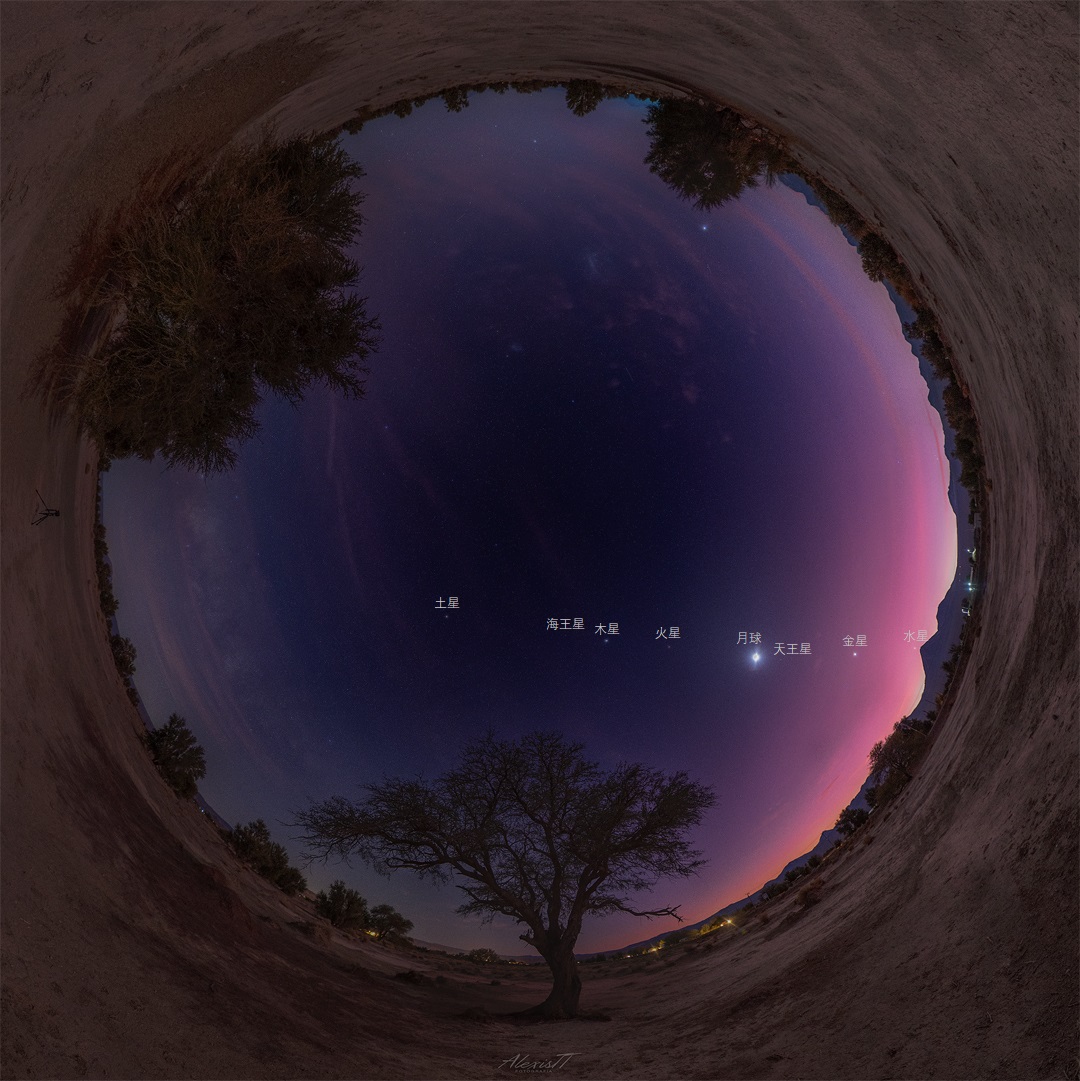2022年6月29日
Solar System Family Portrait
Image Credit & Copyright: Alexis Trigo
Explanation: Yes, but have you ever seen all of the planets at once? A rare roll-call of planets has been occurring in the morning sky for much of June. The featured fisheye all-sky image, taken a few mornings ago near the town of San Pedro de Atacama in Chile, caught not only the entire planet parade, but the Moon between Mars and Venus. In order, left to right along the ecliptic plane, members of this Solar System family portrait are Earth, Saturn, Neptune, Jupiter, Mars, Uranus, Venus, Mercury, and Earth. To emphasize their locations, Neptune and Uranus have been artificially enhanced. The volcano just below Mercury is Licancabur. In July, Mercury will move into the Sun’s glare but reappear a few days later on the evening side. Then, in August, Saturn will drift past the direction opposite the Sun and so become visible at dusk instead of dawn. The next time that all eight planets will be simultaneously visible in a morning sky will be in 2122.
Notable Submissions to APOD: Morning Planet Parade 2022 June
Tomorrow’s picture: open space
太阳系家族的合照
影像提供与版权: Alexis Trigo
说明: 你曾同时见到所有的太阳系行星吗?这种罕见的“行星点名”景观,几乎整个6月的清晨皆可见。这幅在数个早晨前摄于智利.圣佩德罗德阿塔卡马镇近郊的鱼眼镜头全天主题影像,不但捕捉了所有行星的列队游行,也拍到位在火星与金星之间的月亮。在这张太阳系家族照里,在黄道上由左到右依序为地球、土星、海王星、木星、火星、天王星、金星、水星、和地球。为易于看见它们的相对位置,海王星及天王星经过人为强化增亮。此外,水星下方的山峰是利坎卡武尔火山。在7月,水星将隐没在太阳的炫光里,不过,在数天后会在另一侧的夜空中复现。接着在8月,土星将通过与太阳180度反向 的位置,成为傍晚时分才可见的天体。下次想在清晨天空再同时见到这8颗大行星,得等到2122年。
提交给APOD的重要材料: 2022年6月的晨星游行
明日的图片: open space




dreat